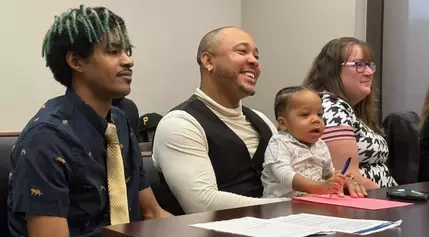News

In a world where cultural sensitivity and inclusivity are paramount, the issue of blackface in Halloween costumes has become a contentious topic. A recent survey by the Pew Research Center revealed that a significant portion of Americans believe the practice is acceptable, sparking a heated discussion on the ethics and implications of such a stance. This article delves into the nuances of this complex issue, exploring the perspectives of both proponents and opponents, and offering a balanced analysis of the ongoing debate.
Unmasking the Controversy: Blackface and the Halloween Dilemma
The Divisive Debate
The Pew Research Center survey found that a staggering one-third of Americans believe that the use of blackface as part of a Halloween costume is "always or sometimes acceptable." This statistic highlights the deep divide in public opinion on the matter, with a significant portion of the population seemingly unaware of the historical and cultural significance of the practice.Perspectives from the Frontlines
Comedian Sam Jay, in a conversation with fellow comedian Roy Wood Jr., offered a poignant perspective on the issue. Jay expressed empathy for a child who wanted to dress up as NBA star Kevin Garnett, only to be dissuaded by his parents due to the potential offense of darkening his skin. "There was a part of me that felt bad for him, because now he's just a white boy in a Kevin Garnett and he could have been that on any day of the week," Jay remarked, highlighting the nuanced nature of the debate.The Racial Divide
The Pew Research Center survey also revealed a stark racial divide in attitudes towards blackface. While 39% of white respondents believed the practice was always or sometimes acceptable, only 19% of Black respondents shared the same sentiment. This disparity underscores the differing lived experiences and historical contexts that shape the perspectives of various communities on this sensitive issue.The Ninja Turtle Analogy
To illustrate the complexities of the debate, Jay offered a thought-provoking analogy. "You don't want to be a ninja turtle up to here, and it's just your head sticking out. And you're like, 'It's me Antoine, but I'm really Michaelangeleo.'" This analogy highlights the fine line between creative expression and cultural appropriation, and the importance of understanding the nuances of such practices.The Generational Divide
The survey findings also suggest a generational divide in attitudes towards blackface. While the practice may have been more widely accepted in the past, the growing awareness and sensitivity around issues of race and representation have led to a shift in public opinion, particularly among younger generations. This evolution underscores the need for ongoing dialogue and education to address the complexities of this issue.The Ethical Considerations
At the heart of the debate lies the question of ethics and the impact of such practices on marginalized communities. Proponents may argue that Halloween is a time for creative expression and that the intent behind the costume is not malicious. However, opponents contend that the historical and cultural significance of blackface cannot be ignored, and that the practice perpetuates harmful stereotypes and undermines the progress made in addressing systemic racism.The Way Forward
As the debate continues, it is clear that there is no simple solution. Navigating the nuances of cultural appropriation and the evolving social landscape requires empathy, open dialogue, and a willingness to listen and learn. Ultimately, the goal should be to foster an environment where everyone can celebrate and express themselves freely, while also respecting the experiences and sensitivities of diverse communities.



































































































